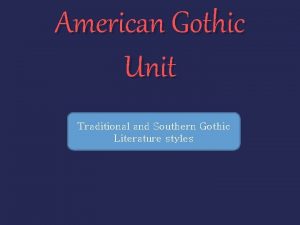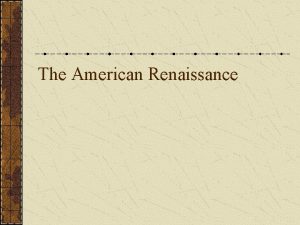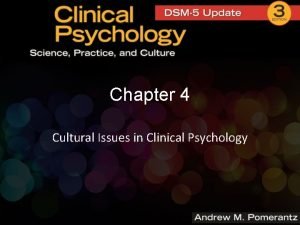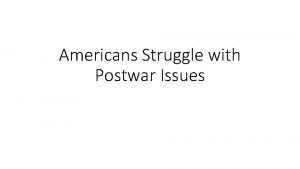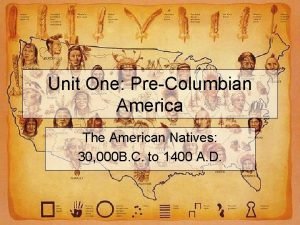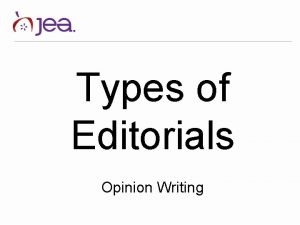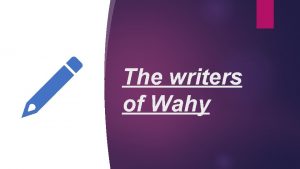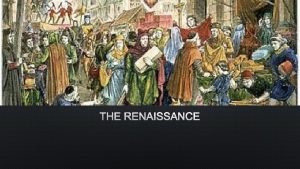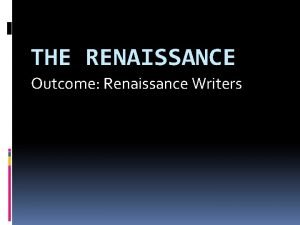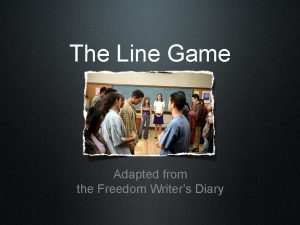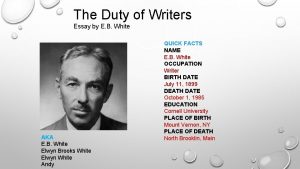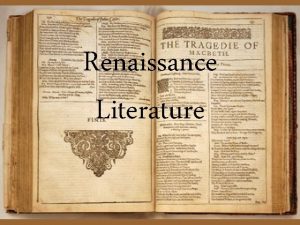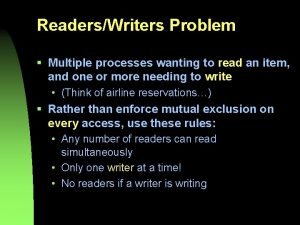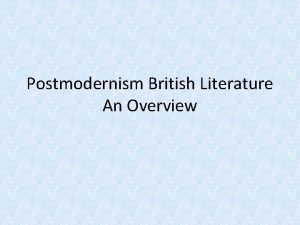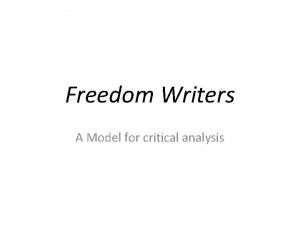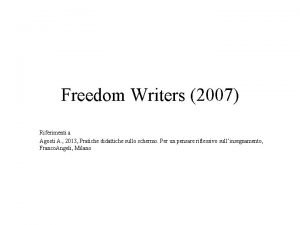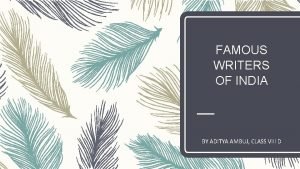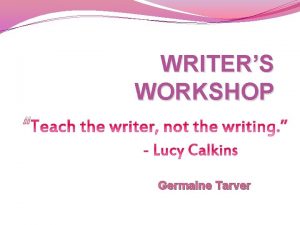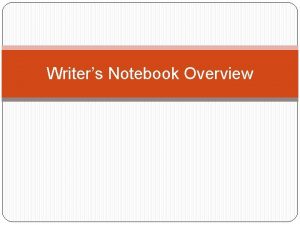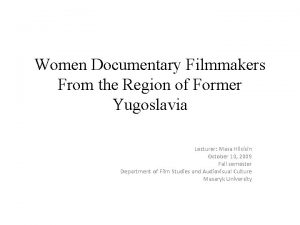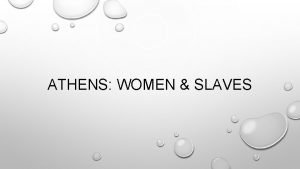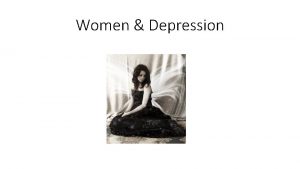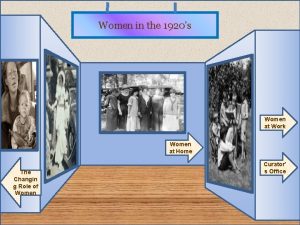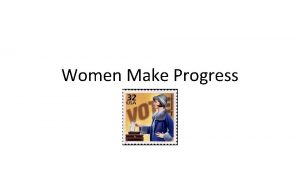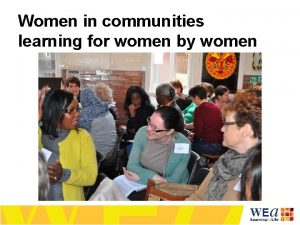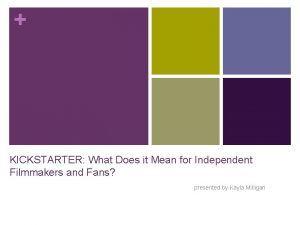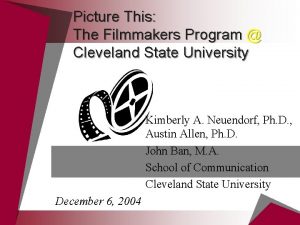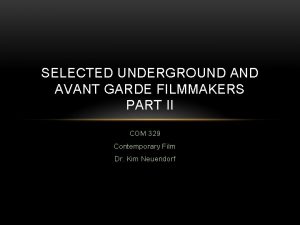SouthIndian American Women Writers Filmmakers Issues of Cultural


























- Slides: 26

South-Indian American Women Writers (& Filmmakers) Issues of Cultural Identity and Gender

Outline z The native mother’ perspectives: “The Mother” z An Immigrant-mother+victim’s perspective: “Management of Grief” z Immigrants and their Cultural Identities z Related Issues and Texts: y. Experience of Hostility and their Survival y. Cultural pluralism “What is Worth Knowing? ” y. Mother-daughter relationship Desperately Seeking Helen

“Her Mother” : Gender issues z What is the most important question the mother asks of her daughter? How does she find out the answer? (the daughter’s change 134; the question: 133; process of discovery: 141 - ) z What makes the mother similar to our mothers? z Which parts of the mother make her “traditional” mother? What aspects of her are “feminist” and unconventional? z How is the mother related to the daughter and her husband?

“Her Mother” : Contradictory Gender identities z “traditional” mother— 1. Motherly advice: Eat, Bathe, Oil your hair, stay with Indians, go meet the good buy. (pp. 131; 134) 2. Views about marriage & Concern with the two daughters’ (135; ) 3. Her own dream and collections (132) z “feminist” – 1. Rebellious thoughts pp. 132; 142 2. teach the daughter independence 3. Views of her husband (135), Indian men and American culture (138)

“Her Mother” : Contradictory Gender identities (2) z How is the mother related to the daughter and her husband? z The daughter’s being closer to the father, p 133; different feminist views p. 135 z The husband’s double standard; his sense of betrayal p. 138

“Her Mother” : Cultural Issues z How does the mother and the father look at the U. S. and India differently? What are the mother’s stereotypical views of “Westerners”? z --Stereotypical views—not clean, divorce, and racism (134; 135 )

“Her Mother” : Gender + Culture Issues z The daughter’s hair-cutting and leaving: z How does the mother get to understand the daughter? y. Grief + memory y. Significant clues: midnight encounter, Rapunzel, handkerchief; pinched look z Sisterhood and Mother-daughter bonding: can they be strong enough support in a society dominated by men?

Bharati Mukherjee Sees immigration as a z Born in Calcutta, India, in process of reincarnation, 1940, she grew up in a breaking away (killing) wealthy traditional family. from the roots. z Went to America in 1961 to attend the Iowa’s Writers Workshop z Married Canadian author Clark Blaise in 1963, immigrated to Canada z Found life as a "dark-skinned, non-European immigrant to Canada" very hard and moved to the U. S.

“The Management of Grief”: Background z. June 22 nd. , 1985 Air India flight 182, leaving from Montreal for India, exploded and crashed into the Atlantic ocean off the Coast of Ireland. z 329 people died. z. Suspects: Two Sikh nationalists. But investigation still goes on. z. Consequence: p. 162

Why is Canadian government criticized? z 1. Indifference – seen as “foreign” affair; z 2. Incompetence: y Canadian government already informed: In early 1985, Indian Prime Minister Rajiv Ghandi was getting ready to visit North America. India asked Canada and the United States to keep close tabs on Sikh militants who might pose a security threat. Many Sikhs around the world were furious over the Indian Government's 1984 assault on the Golden Temple at Amritsar, Sikhism's holiest shrine. y. One person, Talwinder Singh Parmar, was put under strict surveillance. But around the time of the explosion, he managed to go untapped and unnoticed. (source)

How is Canadian government criticized in the story? z. Who else are criticized in the story?

“The Management of Grief” First question: What’re the meanings of the title?

“The Management of Grief”: Different Ways of Management z -- The narrator (Mrs. Shaila Bhave), p. 160, 164, 169, 170 --with apparent calmness, lives in memory, final release 174; z -- Pam, escapes, feeling neglected, wanting to go to California, and ends up serving Orientals. p. 161, 169, 174 z -- Kusum, accept fate, 163, 164, 173 z -- Dr. Ranganathan, another kind of escape, while keeping the connection p. 169, 170, 174, final break 174 z -- the elderly couple leave it to their god; insist on their own way and believe themselves "strong. "

“The Management of Grief”: Different Ways of Management z The Canadian government -- evasive 159, indifferent 160. <--> Irish 163 -164, 165, 166 giving flowers and showing sympathy <--> Her parents: not blaming on the whole group of people because of some individuals 167 (Sheila’s own limitation: p. 171) z Judith Templeton--considers them ignorant, a mess.

“The Management of Grief”: Different Ways of Management Two kinds of bureaucracies: 1. Custom officers; --his image 167 2. Judith– signing papers pp. 162; 170; 172

“The Management of Grief”: Different Ways of Management Theory: 1. Rejection, 2. depression, (Depressed Acceptance) 3. Acceptance, 4. reconstruction (p. 170) What is not considered? Need to keep hope, 167; Need time to go through the process of guilt/regret, prefers ignorance, or their own versions p. 163 mourning process: searching, waiting. Different cultures’ views of grief and mourning.

Immigrants and their Cultural Identities z. Immigration and its Push and Pull factors z. Five kinds of diaspora: y. Victim (e. g. Jews, Africans, Armenians), y. Labour (e. g. Indian, Chinese), y. Trade (e. g. Chinese and Lebanese), y. Imperial (e. g. the British, etc. ), y. Cultural/Economic diasporas (the Caribbean).

Routes of Recent Migrations from Indian Subcontinent Air India H. Bannerji; Rushdie, Imtiaz Dharker (back to India) A. Appachana C. Divakaruni B. Mukherjee, Sujata Bhatt B. Mukherjee, India-- U. S. –Canada -- U. S. Sujata Bhatt India – U. S. -- Germany

Immigrants and Cultural Identity z. Possible Choices But do they have a choice? y. Assimilation the myth of melting pot; self-hatred (Pam in M, second-generation) y. Separation/isolation Discrimination, Exclusion (. g. the elderly couple in M) y. Hyphenation (In-Between positions) Multiculturalism = Isolation or Ghettoization (Sheila p. 168)

Cultural Identity: Multiple Influences “Her Mother” “Paki, go home. ” “Management” Family and other social units

Cultural Identity and Gender Identity: Issues Related to South Asian American Women (1) z. Cultural Identity in between country of origin and the host nation y – potted plant, empty baggage, umbilical cord buried in the host nation y -- how/whether to look back y -- hyphenated or not (e. g. B. Mukherjee– refused to be hyphenated) z. Experience of Racism: Visible Minorities e. g. Sari, food, religion,

Identity: Issues Related to SAAW (2) z Cultural Identity influenced by Sexism of both places (“Her Mother”) z Experience of Racism and Sexism Combined in both places. e. g. “Her Mother” “Management” z Racism: y can happen because of lack of understanding, y subtle ones in the questions, harsher ones in racist slurs y. Individual institutionalized z Intensify or weaker mother-daughter bonding and sisterhood

Cultural Identity and Gender Identity: Issues Related to South Asian American Women (3) z. Two mothers experience different kinds of loss; z. Carry on what they cherish and are given.

Cultural Identity and Gender Identity: Issues Related to South Asian American Women (4) Experience of Racism & need for resistance -- “Paki Go Home” In-between positions and cultural pluralism: “We the Indian Women in America” & “What is Worth Knowing? ” Mother-daughter relationships -- “To Sylvia Plath”

Desperately Seeking Helen by Eisha Marjara z Helen, . . . , is a sign of rebellion. Only she is also a role model, a vamp (the opposite to heroine) who turns out to be a combination of mother figure and Eisha Marjara’s need for resistance. z. Another example— from the daughter’s perspective

Desperately Seeking Helen by Eisha Marjara z "Helen was a larger than life figure, the icon of Indian cinema which is the world's largest dream factory. More than a movie star, she was a glittering figure of desire and playfulness, the mistress of a thousand disguises, yet always herself, '' avers the film-maker who has written, directed and enacted the lead role in the film. (source)
 Modern gothic literature vs traditional gothic
Modern gothic literature vs traditional gothic American renaissance writers
American renaissance writers Thyroid symptoms for women
Thyroid symptoms for women Cultural issues in clinical psychology
Cultural issues in clinical psychology Cultural issues computer science
Cultural issues computer science Americans struggle with postwar issues
Americans struggle with postwar issues Native american tribes
Native american tribes American indian cultural region
American indian cultural region Machu picchu and mesa verde similarities
Machu picchu and mesa verde similarities Four opinion writers
Four opinion writers How many writers of wahi
How many writers of wahi This french word is used to describe a creative rebirth
This french word is used to describe a creative rebirth What did renaissance writers write about
What did renaissance writers write about Freedom writers line game questions
Freedom writers line game questions Freedom writers diary entries
Freedom writers diary entries The duty of writers
The duty of writers Creative writers and day-dreaming
Creative writers and day-dreaming Actuarial career fair
Actuarial career fair Italian renaissance writers
Italian renaissance writers Readers writers problem
Readers writers problem British literary movements
British literary movements Period of activism 1970 to 1972 important key points
Period of activism 1970 to 1972 important key points Famous british authors
Famous british authors Erin gruwell freedom writers: stories from the heart
Erin gruwell freedom writers: stories from the heart Freedom writers scheda didattica
Freedom writers scheda didattica Njanapeedam
Njanapeedam Famous english writers
Famous english writers
